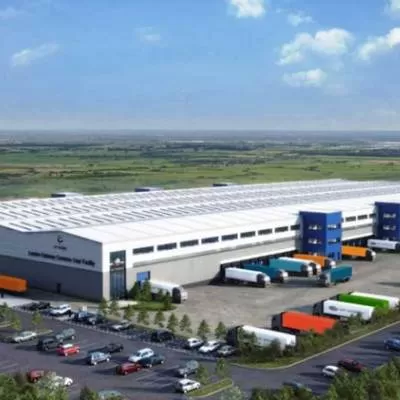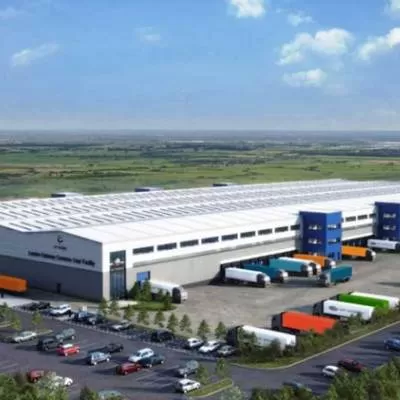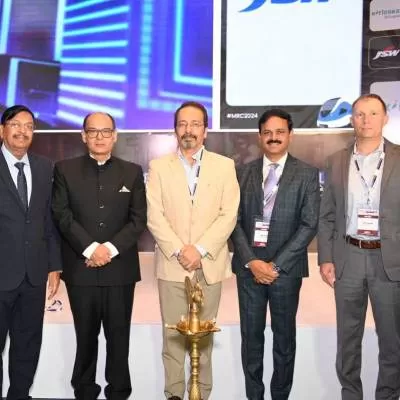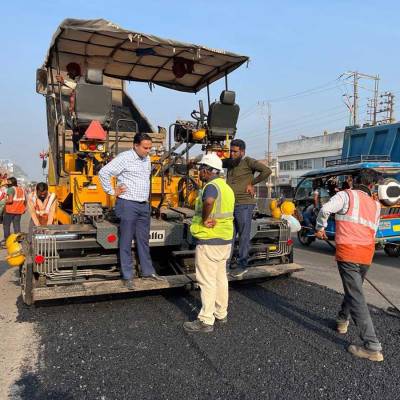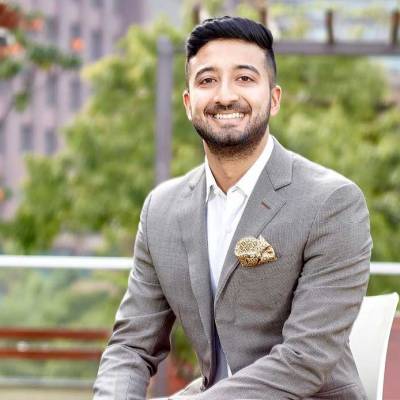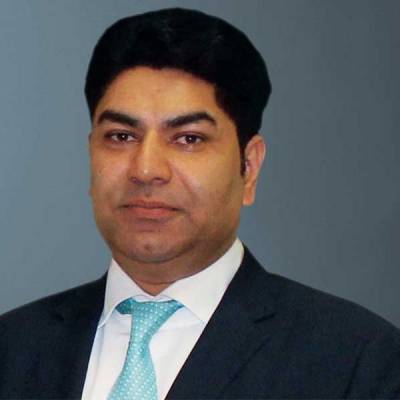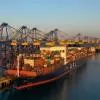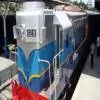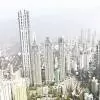- Home
- Infrastructure Urban
- WAREHOUSING & LOGISTICS
- The current market scenario offers new opportunities for PEBs
The current market scenario offers new opportunities for PEBs
Interarch manufactures some of the most advanced roofing systems available in the market, ranging from typical screw-down roofing panels to high-end standing seam roofing systems. The company can produce all its roofing systems in limitless lengths with site roll-forming capabilities for all its panels. Gautam Suri, CTO and Founder Director, Interarch Building Products elaborates on the company, its offerings and current roofing market in India.
How do you view the current industry for metal roofing in India?
The current market offers a new opportunity for PEBs and pre-engineered construction due to a renewed thrust on infrastructure. These solutions are most suitable for construction of airports, ports, warehousing sites as well as power stations.
What are your offerings in the case of metal roofing?
In 1992, Interarch pioneered colour-coated engineered metal roof and wall systems in India. Since then, the company has been the leading manufacturer and provider of pre-engineered metal roof and wall systems used in some of the largest and most pristine projects of the country. Through TRACDEK Hi-Rib Metal Roof and Wall Systems, it pioneered colour coated, engineered metal roof and wall systems in India. It is the largest supplier and installer of metal roofing systems in India with a manufacturing capacity of over 150,000 mt per annum of steel building structures and over 40,000 mt per annum for its Tracdek Roof and Wall systems. With four manufacturing facilities at Greater Noida, Rudrapur and Kiccha in Uttarakhand, and Sriperumbudur in Tamil Nadu, Interarch, headquartered in New Delhi, has a pan India network with regional offices in all major cities.
Elaborate on the technologies adopted for cladding and constructing roofs?
As per green building requirements, Galvanume sheets with SRI (solar reflective index) have been insulated for cladding and roofing, ensuring low heat gain and transfer. Moreover, the glass for the windows has been selected considering the SHGC (solar heat gain coefficient) factor.
Highlight your role in IGI-Terminal-3 building project.
We shifted an entire team of senior in-house design, manufacture, project management and construction experts to the DIAL site for a period of over 10 months to handle the structural steel execution as well as the roofing of the terminal building. The site required constant pre-planning, planning and then further re-planning to cater to the dynamic site conditions, along with constant design and redesign for interface details and adaptability and compatibility to various construction aspects. This enabled us to accelerate response times and streamline its system.
This metal roofing structure is manufactured by making use of 100 per cent aluminium and 100 per cent recyclable material. It enables proper air flow, controls temperature and provides healthy and comfortable indoor. The energy efficient methods in steel production used for the roof structure helps in substantially reducing greenhouse gas emissions. Even after demolition, these buildings don't accumulate wastage in the environment and the aluminium and steel can be recycled for other applications too.
The aluminium roof was created by using an insulated seven layer roofing system. Kindly elaborate.
The entire roof system comprised of seven independent insulating layers, laid layer by layer, by hand, over a coverage area of over 45 acre. That led to laying of 315 acre of roofs in less than 12 months. Almost 1.3 million sq m of roof was laid using some of toughest materials in the world. Our project management team deployed over 30 roofing teams totalling over 1,500 people for the project.
What were the materials used? Where were they sourced from?
None of the bulk material in the roofing system were produced by us. We thus became one of the largest pre-engineered buyers of such large volumes of roofing material under a single contract ever in India. Each of the seven layers of the 1.2 million sq m of roofing was purchased from the leading material vendors while the aluminium skin was imported from Kalzip.
Does the uniquely created roof have any special features? What is the total area that it covers?
The IGI-Terminal 3 building is the second largest integrated terminal building of its kind in Asia and its roof covers over 45 acre.
(Communication by the management of the company)
Gautam Suri, CTO and Founder Director, Interarch Building Products Pvt Ltd Interarch manufactures some of the most advanced roofing systems available in the market, ranging from typical screw-down roofing panels to high-end standing seam roofing systems. The company can produce all its roofing systems in limitless lengths with site roll-forming capabilities for all its panels. Gautam Suri, CTO and Founder Director, Interarch Building Products elaborates on the company, its offerings and current roofing market in India. How do you view the current industry for metal roofing in India? The current market offers a new opportunity for PEBs and pre-engineered construction due to a renewed thrust on infrastructure. These solutions are most suitable for construction of airports, ports, warehousing sites as well as power stations. What are your offerings in the case of metal roofing? In 1992, Interarch pioneered colour-coated engineered metal roof and wall systems in India. Since then, the company has been the leading manufacturer and provider of pre-engineered metal roof and wall systems used in some of the largest and most pristine projects of the country. Through TRACDEK Hi-Rib Metal Roof and Wall Systems, it pioneered colour coated, engineered metal roof and wall systems in India. It is the largest supplier and installer of metal roofing systems in India with a manufacturing capacity of over 150,000 mt per annum of steel building structures and over 40,000 mt per annum for its Tracdek Roof and Wall systems. With four manufacturing facilities at Greater Noida, Rudrapur and Kiccha in Uttarakhand, and Sriperumbudur in Tamil Nadu, Interarch, headquartered in New Delhi, has a pan India network with regional offices in all major cities. Elaborate on the technologies adopted for cladding and constructing roofs? As per green building requirements, Galvanume sheets with SRI (solar reflective index) have been insulated for cladding and roofing, ensuring low heat gain and transfer. Moreover, the glass for the windows has been selected considering the SHGC (solar heat gain coefficient) factor. Highlight your role in IGI-Terminal-3 building project. We shifted an entire team of senior in-house design, manufacture, project management and construction experts to the DIAL site for a period of over 10 months to handle the structural steel execution as well as the roofing of the terminal building. The site required constant pre-planning, planning and then further re-planning to cater to the dynamic site conditions, along with constant design and redesign for interface details and adaptability and compatibility to various construction aspects. This enabled us to accelerate response times and streamline its system. This metal roofing structure is manufactured by making use of 100 per cent aluminium and 100 per cent recyclable material. It enables proper air flow, controls temperature and provides healthy and comfortable indoor. The energy efficient methods in steel production used for the roof structure helps in substantially reducing greenhouse gas emissions. Even after demolition, these buildings don't accumulate wastage in the environment and the aluminium and steel can be recycled for other applications too. The aluminium roof was created by using an insulated seven layer roofing system. Kindly elaborate. The entire roof system comprised of seven independent insulating layers, laid layer by layer, by hand, over a coverage area of over 45 acre. That led to laying of 315 acre of roofs in less than 12 months. Almost 1.3 million sq m of roof was laid using some of toughest materials in the world. Our project management team deployed over 30 roofing teams totalling over 1,500 people for the project. What were the materials used? Where were they sourced from? None of the bulk material in the roofing system were produced by us. We thus became one of the largest pre-engineered buyers of such large volumes of roofing material under a single contract ever in India. Each of the seven layers of the 1.2 million sq m of roofing was purchased from the leading material vendors while the aluminium skin was imported from Kalzip. Does the uniquely created roof have any special features? What is the total area that it covers? The IGI-Terminal 3 building is the second largest integrated terminal building of its kind in Asia and its roof covers over 45 acre. (Communication by the management of the company)





